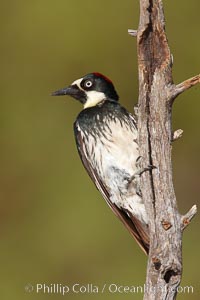

In all, we determined the fates of 1,059 offspring (577 males, 482 females) that survived to their first February following fledging, the earliest date at which young have been observed to disperse ( Koenig and Mumme 1987). We followed 25 to 40 social groups between 1972–1998 over an irregular area of approximately 424 ha (to 1981) and 625 ha (1982–1998) (Fig. Groups thus consist of a variable number of cobreeding males that are close relatives and joint-nesting females that are sisters or a mother and her daughter, along with offspring from prior years. Similarly, birds inheriting breeding status often join older siblings or parents as breeders. The latter is often accomplished by sibling units, and two sisters or up to four brothers may jointly fill a vacancy and subsequently cobreed together in the group. Offspring can eventually become breeders either by inheriting breeding status within their natal group following the death of breeders of the opposite sex or by dispersing and filling reproductive vacancies elsewhere in the population.

Dispersal Distributions: the DataĪcorn Woodpeckers are cooperative breeders and offspring frequently remain in their natal groups for up to several years after fledging as nonbreeding “helpers at the nest” ( Koenig and Mumme 1987). Here we discuss several issues relating to the problem of, and partial solutions to, obtaining unbiased dispersal distributions using data from our long-term study of Acorn Woodpeckers ( Melanerpes formicivorus) in central coastal California. We contend that considerably less is known about dispersal distributions of birds than much of the literature suggests. How much confidence can we place in estimates given to these parameters? Unfortunately, both the distribution and frequency of dispersal are critical parameters in estimates of gene flow and effective population size. Second, because study areas are finite in size, dispersal distributions are subject to systematic bias. First, because physical evidence of death is rarely obtained, emigration is invariably confounded with mortality. Nonetheless, two difficulties conspire to make the specifics of dispersal as difficult to obtain as those of mortality. In contrast, both immigration and emigration are frequently observed in studies involving marked individuals. Thus, although estimates of survivorship are available for many species, little is known about specific causes of adult mortality in most populations of wild birds. Mortality of adult birds is rarely observed due to their relative mobility, large home range size, and the fragility of their remains. However, there is a significant difference between our knowledge of avian mortality and avian dispersal. In contrast, relatively little is known about the other two phenomena.

Extensive data are available on birth rates in birds indeed, there may be no demographic parameter that has been studied in more detail than avian clutch size and nesting success. Three processes determine population growth: birth rate, mortality rate, and dispersal, the latter of which is often divided into immigration and emigration. Until then, we urge caution in interpreting observed dispersal data from all but the most isolated of avian populations. New technologies may help alleviate this problem in the near future. All of these methods have their limitations or can only be used in special cases. Three field methods used to help correct for bias beyond the limits of normal study areas include surveying alternative study sites, expanding the study site (super study sites), and radio-tracking dispersers within a population. Estimated mean and root-mean-square dispersal distances range from 0.22–2.90 km for males and 0.53–9.57 km for females depending on what assumptions and corrections are made. Unfortunately, there is generally no objective way to determine the fates of birds not accounted for by these procedures, much less estimating the distances they may have moved. Estimating the proportion of birds disappearing from the study area and correcting for detectability within the maximum observable distance are the first steps toward achieving a realistic estimate of dispersal distributions. We illustrate this problem using our long-term study of Acorn Woodpeckers ( Melanerpes formicivorus) in central coastal California. Dispersal data are inevitably biased toward short-distance events, often highly so.


 0 kommentar(er)
0 kommentar(er)
